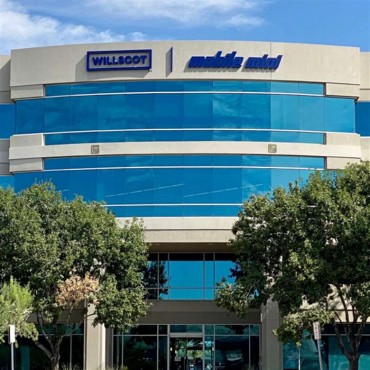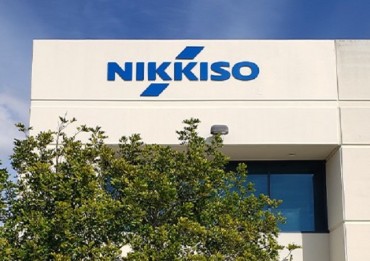TORONTO, Mar. 4 (Korea Bizwire) — Gratomic Inc. (“Gratomic” or the “Company”) (TSX-V:GRAT) (FRANKFURT:CB81) (WKN:A2JAP3) is pleased to announce that Gratomic and Perpetuus Carbon Technologies Ltd. (“Perpetuus”), have agreed to enter into negotiations to form a Joint Venture Agreement to build on Perpetuus’ capability (currently (2018) to initially provide 500 tonnes of surfaced modified graphenes per annum) to the tire manufacturing industry.
Gratomic Executive Chairman and CO-CEO Sheldon Inwentash stated, “Junior graphite Miners and the graphene industry as a whole have spent the last ten years seeking to identify the “Killer App” for graphenes. We are therefore very pleased to announce that based on the technical information derived from laboratory and “real world “testing received from our LOI partner Perpetuus. We are mutually confident of our success in identifying an application that will prove an industry game changer whereby graphite derived graphenes will be produced in industrial quantities to satisfy the needs of a market sector that will consume 1000’s of tonnes of engineered for purpose graphenes to meet the projected market demand. Consequently, both Gratomic and Perpetuus have now agreed to enter into substantial negotiations for a joint venture to address end user tire manufacturing needs. This has been a long and intensive development and testing process and we are now excited to move towards negotiating a Joint Venture and begin commercial production in 2018.
Gratomic is pleased to provide the following summary findings facilitated by Perpetuus in the context of the “Production of Graphene Nano Platelets (“GNP’s”) (sometimes referred to as multilayer graphene’s or graphene flakes) from Mined Bulk Graphite provided by Gratomic Inc.
Background
Gratomic engaged Perpetuus Carbon Ltd in a development programme for the purpose of:
- Completing a study that would determine the optimum method to produce GNP’s from mined graphite provided by Gratomic Inc.
- Employing the GNP’s derived from the graphite as a material enhancing component for mass-market commercial exploitation.
Gratomic executed a Letter of intent (‘LOI’) with Perpetuus Carbon Technologies Ltd in August 2017. The specific purpose of the LOI was to produce viable GNP enhanced tires, establishing that Aukam Graphite derived GNP’s were suitable for the tire industry and can be produced by liberating surface modified flakes of nano-graphite, via the PCT patented plasma processing technology.
Graphene is a two-dimensional carbon allotrope, arranged in a hexagonal crystal lattice structure currently produced in “islands” of graphenes with the lateral dimensions typically measured in millimeters. When properly dispersed a thickness of one or two or three atoms can be achieved.
The majority of GNP’s employed to develop mass-market applications is produced in universities and institutional labs, a few grams at a time, often at a cost greater than purchasing platinum.
Graphene is currently manufactured by two methods
- “Top down” where the Graphene lattice is liberated from its host, graphite
http://www.globenewswire.com/NewsRoom/AttachmentNg/20344975-7f61-4791-95c6-f14772d774e7
- “Bottom up” where the Graphene lattice is grown atom by atom.
http://www.globenewswire.com/NewsRoom/AttachmentNg/07b5e060-a8bd-4013-afd3-3db526614782
To identify a solution in the respect of industrial scale production of graphite derived functionalised GNP’s for mass-market consumption from its Aukam graphite mine feedstock. Gratomic have undertaken a discovery programme in collaboration with Perpetuus Carbon Technologies (Perpetuus) to identify the best method available to meet the needs of the mass market.
Perpetuus are the beneficial owners of a patented technology and probably the only company globally that can deliver by an environmentally friendly method of graphite to graphenes suitably nano engineered for the mass market.
Perpetuus are also currently equipped to produce 100’s of tonnes per annum with the ability to scale up to the 1000’s of tonnes per annum that will be demanded by the tire manufacturing industry.
Currently there are potentially scalable and low-cost methods available to mass-produce “top down” graphite to graphene flakes for applications such as nano reinforcements for composites; polymer based conductive inks, energy storage and coatings. However, it is crucial that graphenes produced on an industrial scale must outperform, existing options such as carbon black and activated carbon. Also, to motivate industries to adopt the new materials use in the targeted applications it must also be cost effective.
Perpetuus have established that its patented plasma-based technology can cost effectively transform the friable crystalline Aukam graphite. Because of its friability the Aukam graphite more easily processes in to high quality GNP’s that can be produced on an industrial scale. It has also been established that the outputs when suitably surface modified and suitably formulated within a tire elastomeric matrix will deliver significant benefits to its initial target market.
The current status of the Gratomic and PCT collaborative venture is:
- The GNP’s produced were surface modified specifically to be included within hybrid elastomeric tire formulations.
- The graphite to GNP enhanced hybrid formulations were employed in bicycle and passenger vehicle treads.
- When tested in the respect of laboratory static and dynamic testing the graphene enhanced compound results indicated that the treads were superior to current tread formulations.
- When the treads were road tested the results concluded that when compared to a globally recognised high performance tire the graphene enhanced tread would deliver an approx. lifetime increase of 5000 kilometers.
Overview: – Gratomic Graphite Derived GNP Enhanced Tire Components
A tire is a complex composite device. There are many ways in which it is possible to improve a single aspect of its performance such as improving rolling resistance by changing the dimensions of the tire. However, “give and take” variations in compound formulations are inevitably detrimental to other performance parameters. In this sense the advancement of tire science and technology involves a constant compromise between compatible yet mutually exclusive performance demands.
As a whole, a typical tire is a composite of several parts: primarily sidewalls, inner liner and the tire tread – which itself is a rubber component comprising a steel chord and textile reinforced rubber network. If one considers that the tire tread is the only part of the vehicle’s contact with the road, it becomes obviously evident that all sources of energy dissipation are facilitated by the tread material which is the prime influence on total performance such as handling fuel efficiency and braking efficiency. Adding Gratomic derived GNP’s changes the shape of the rheology curve, which influences the cure chemistry and results in changes to the rubber compound.
Proven studies establish:
- The use of GNP’s in inner liner compounds will reduce air permeability.
- Perpetuus are working with cycle and passenger tire manufacturers using thin layers of graphene for the same purpose.
- The same characteristics have established that varied graphene formulations can be extended to passenger and light truck tire manufacturing.
- GNP’s equals a lighter tire.
- GNP’s equals lower rolling resistance, high impact and tensile properties
- GNP’s therefore offers the potential for improved economy and superior performance
Gratomic wish to consider the practicalities of GNP production in order to exploit bulk applications where large scale and low-cost production is critical.
There are numerous ways to produce graphene from graphite.
Commercial industrial scale mass production Options.
Scalable methods of industrial graphene production currently being practiced and further explored are graphite oxide, liquid-phase exfoliation and electrochemical methodologies. The following provides a perspective on these routes in the context of industrial scale production. The main concerns regarding current methods is
- Quality or crystalinity of the graphene sheet produced
- Scalability (1000’s of tonnes per annum)
- Managing post production toxic waste
- Controlled nano engineering of the graphene outputs to enable comprehensive exploitation of the graphene applications.
The most popular and widely exploited current method being explored by the majority of aspirational industrial scale producers to provide commercial quantities of graphene “top down” graphene is based on a scale up of early laboratory methods. The chosen system being Redox, (via the Hummers method or modified Hummers method). Generating graphite oxide (GO) through the chemical reaction of natural mined graphite. This method is the primary method
GO is produced from mined refined graphite where the precious graphene layers are stacked and bonded together within the graphite. To exploit graphene commercially via the Hummers method the graphene must be liberated from the purified graphite ore.
The vast majority of graphene producers attack the graphite ore with strong oxidising agents that penetrate oxygen in between the layers of graphene (intercalation). There are three phases to the process:
- The initial phase is to convert graphite to a sulphuric acid graphite intercalation compound.
- The secondary phase is conversion of the graphite intercalation compound. In to an oxidized form of graphite known as graphite oxide
- The third phase is converting graphite oxide into graphene oxide by adding reducing agents, this partially reduces the oxygen-containing groups on the surface forming a graphene that still when analysed reveals less oxygen content.
Originally the Hummers method employed a combination of sodium nitrate, potassium permanganate and sulphuric acid. There are variations and modifications of the original Hummers method such as excluding the use of sodium nitrate, to reduce or prevent the production of toxic nitrous gas and other toxic byproducts that are typical of wet chemistry methods to produce graphene flakes. Another variation is to use phosphoric acid to increase the productivity of GO with elevated oxidation levels.
The primary focus in this area however has been to achieve an environmentally friendly safer scalable method whereas expanded graphite rather than graphite ore is employed as the primary feed stock unfortunately when potassium permanganate reacts with sulphuric acid the oxidizing species generates a dimanganese heptoxide. Most troubling is dimanganese heptoxide will explode at temperatures around 500C when it interacts with organic compounds. The control of heat generated in such a high-risk reaction on a large industrial scale process provides significant challenges.
Other issues that relate to Hummers and modified Hummers methods include
- Batch-to-batch reproducibility
- Hole defects in the graphene sheets during oxidation which prejudice conductivity
- The washing steps to clean the material after synthesis can detrimentally effect graphene properties and provide a troublesome post production waste
- The carboxylic acid groups created on the graphene edges are particularly challenging to reduce.
- Mildly oxidized large GO flakes are producible but at significantly reduced productivity level and the effective dispersibility in water is significantly reduced.
In an industrial scale operation, the product of this process is most likely to be multi-layer graphene or nano graphite, rather than graphene. Consequently, it is often the case that consistency of the quality cannot be guaranteed. In fact, the vast majority of “graphene” in the market is actually graphene oxide. This method finds challenges in precision, unpredictable quality, performance and high production cost. The process is also slow but can be accelerated by introducing elevated temperatures by many means including atmospheric plasma microwaves. The outputs without further refinement will have limited commercial applications.
An electrochemical option offers another popular alternative process.
Two graphite electrodes are immersed in an electrolyte. By applying a potential between the electrodes, the cathode graphite component is eroded away, and the electrolyte is loaded with layers of nano graphite’s. The suspension of graphite particles is dried and then heated at an elevated temperature or it can be thermally shocked with atmospheric plasma microwaves providing graphene nano platelets.
Carbon and graphite electrodes are conventionally employed in electrochemistry. The availability of large-scale industrial electrolyzers as a platform for scaling up electrochemical reactions is currently un proven. Recently an Australian junior graphite mining company have explored this route to produce graphene materials. The electrochemical route exploits intercalation of ions and electrochemical initiated reactions with the electrolyte for the exfoliation mechanism. Contingent on the method and variations on electrochemistry the process could be applied to facilitate functionalisation and exfoliation of graphite electrodes controlled by applied voltage and the chosen electrolyte typically, sulphuric acid, ionic liquids, lithium perchlorate in propylene carbonate, aqueous inorganic salt solutions. Diverse types of graphenes could be produced. Academic and institutional research has demonstrated that applying non-oxidative cathodic bias to the graphite electrode followed by in situ electrochemical functionalization, electrochemically functionalized graphene has been obtained that could be transformed providing pristine graphene.
The major limitation on the electrochemical route for mass production is the method employed by junior graphite miners involves the use of “lumps” of mined graphite ore suspended in an electrolyte. For the process to be viable an unbroken voltage bias to the graphite flakes is required. The methods employed on the lab bench that have indicated some promise employed a single, continuous graphite electrode in the form of a graphite rod, foil or highly oriented pyrolytic graphite blocks.
It is problematic to note that although such work is relevant to the use of graphenes for commercial applications the work to date has not delivered stand out examples of project deliverables that are currently being exploited on a commercial scale. It is also problematic that some if not most of the graphene employed in the experiments employ top down production methods that if commercialised will offer serious concerns in the respect that if they ever could be produced in industrial quantities the production methods would yield unmanageable quantities of postproduction toxic residues.
Graphene Oxide production being a typical example. Graphene Oxide (GO), Monolayer & bi-layer graphene produced via environmentally friendly cost-effective methods on an industrial scale is currently science fiction. The same applies to the electrochemical option. There are no producers that can produce tonnes let alone the 100s or 1000s of tonnes of a consistent quality product currently meeting these elevated expectations.
Because few if any producers of graphene who boast an industrial scale capacity have been challenged to manipulate package and transport graphenes in bulk quantities to a market that could consume 10,000s of tonnes. The manipulation and handling of Graphene has not been carefully considered due to its weightless nature. Single layer graphenes are invisible to the naked eye and will disappear into the atmosphere due to miniscule convection and air movements these factors also currently restrain the manufacturing of graphene on an industrial scale.
Hence, there is a need to seek a fundamental change in the oxidative exfoliation mechanism and the “Holy Grail”, in the graphite oxide route is to develop a novel controlled oxidation mechanism in which the specificity and density of the oxygen- containing functional groups could be well controlled.
Regulatory compliance in the respect of life cycle analysis and environmental impact studies are all but almost completely ignored. Due to graphenes varied range of properties, product Innovations as well as new application discoveries are being explored by major manufacturers on a laboratory R&D scale in respect of energy, aerospace, biomedical & life sciences, electronics, defense and others such as sensors, catalyst, coating, filtration and adhesive electronic. However, lack of mass production, high prices and other key factors are restraining the growth of the global graphene market.
- Friable Graphenes are graphenes with the bonds broken.
http://www.globenewswire.com/NewsRoom/AttachmentNg/942ab4c1-4ecf-4f7a-81f1-bee9ace16f4d
Private sector investments are abundant in junior graphite miners and other optimistic hyped graphene players that are funded also by public funds and shareholder funds with few if any demonstrating the ability to capture and support a mass-market application.
In Summary
Gratomic Inc. and Perpetuus Carbon Technologies Ltd have agreed to enter into negotiations to form a Joint Venture Agreement to build on Perpetuus’s capability (currently (2018) to provide 500 tonnes of surfaced modified graphenes per annum) to the tire manufacturing industry. Once the market has been established, Perpetuus have the capability to elevate capacity to 1000’s of tonnes per annum of graphite derived surface modified GNP’s. Perpetuus have reasonable expectations that the first commercially available tires will be launched into the market in 2018.
| Ian Walters Director Perpetuus Advanced Materials |
Note: This report is prepared solely for the directors of Gratomic Inc. Whilst, Perpetuus accept it will be viewed by third parties, those parties, cannot rely on information contained, whatsoever, in making investment decisions in Gratomic
About Gratomic Inc.
Gratomic Inc. is an advanced materials company focused on a vertically integrated “mine to market” commercialization of graphite products. Most notably the Gratomic focus is founded on high value graphene-based application components for a range of mass market products.
Sheldon Inwentash, Executive Chairman and Co-CEO
For more information: visit the website at www.ckr-carbon.com or contact:
Arno Brand, Co-CEO +1 416-561-4095 abrand@gratomic.ca
“Neither TSX Venture Exchange nor its Regulation Services Provider (as that term is defined in the policies of the TSX Venture Exchange) accepts responsibility for the adequacy or accuracy of this release.”
FORWARD LOOKING STATEMENTS: This news release contains forward-looking statements, which relate to future events or future performance and reflect management’s current expectations and assumptions. Such forward-looking statements reflect management’s current beliefs and are based on assumptions made by and information currently available to the Company. Investors are cautioned that these forward-looking statements are neither promises nor guarantees and are subject to risks and uncertainties that may cause future results to differ materially from those expected. These forward-looking statements are made as of the date hereof and, except as required under applicable securities legislation, the Company does not assume any obligation to update or revise them to reflect new events or circumstances. All of the forward-looking statements made in this press release are qualified by these cautionary statements and by those made in our filings with SEDAR in Canada (available at www.sedar.com).
Source: Gratomic Inc. via GLOBE NEWSWIRE








